As the growing season winds down and winds and freezes become more frequent one begins to harvest the remaining leaves from the freezes and check the seed harvest status. Like little bunches of bananas the indigo seed pods darken from green to brown to black and start to reveal glimpses of tiny black seed pods.
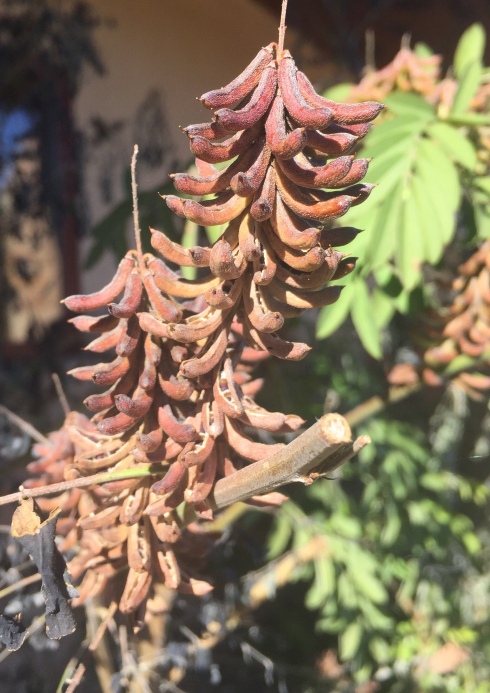
I usually cut back my indigo after the first freezes so that the branches don’t break in the winter winds. I leave some up for the migrating hummingbirds to use in the late winter for observation perches. The stems that hold the seed pods are tough. It is easier to pull them off the same time you harvest the remaining indigo leaves before the “winter” trim. One runs the odds of leaving leaves on the branches against the odds of a wet week that will soak seed pods and frozen leaves. The weather forecast becomes a thing of great interest! But the longer one leaves the seed pods on, the better they ripen and are easier to harvest.
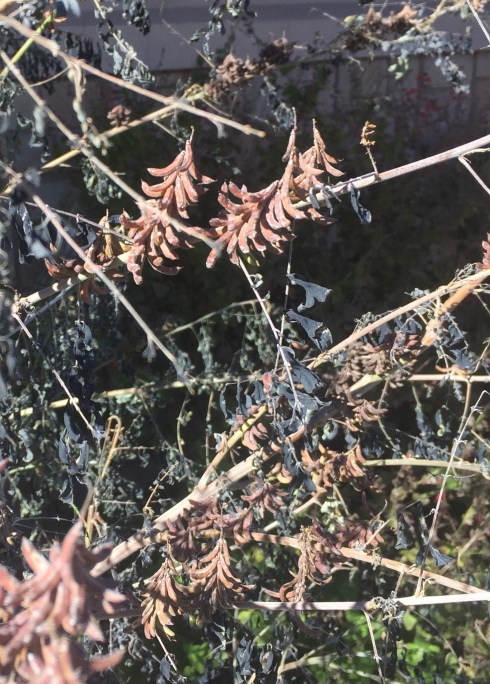
You can see in the photo below the “not quite ripe” against the “bursting and fling the seed out” pods. Greenish versus brown/black finishes give you the signal. Hence the wait for ripening against the rain gamble.
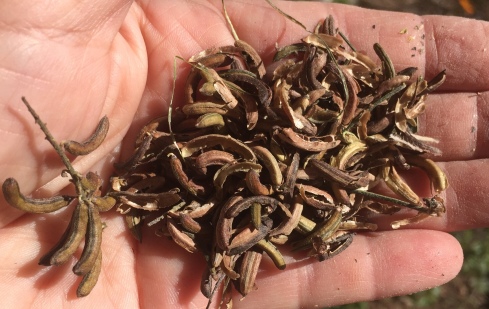
Usually I process in stages, cut some branches, strip out the seed pods and the frozen leaves, set the pods aside, finish up the leaf processing and let the pods continue to dry out. They are easier to process when dry. A bit of my leaf harvest is written about in this blog entry.
Below you see my processing station of the dried seeds in my red garden holding bucket. My winnowing silver bowl, my two kitchen strainers with appropriate hole size, a trash bucket for hulls and my faithful molcajete for breaking the pods for seed extraction. 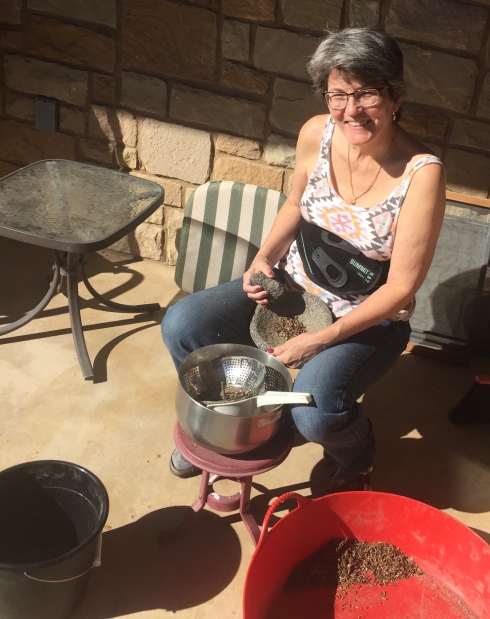
When the pods are dry they crack much easier when pressure is lightly applied by the molcajete grinding stone to break the bond.

The lightly crushed pods are put thru the two sieve process and manually stirred to release the seeds. Husks go into the black bucket for one last look for more seeds.

The seed harvest is set aside to winnow in the winds to cull out the smaller husks and chaff. If you pick over your starting seed pods and cull the green immature pods your final effort will result in a good seed harvest for next year’s use. This is not a high tech process, just time and patience that gets you in position for next year’s planting.
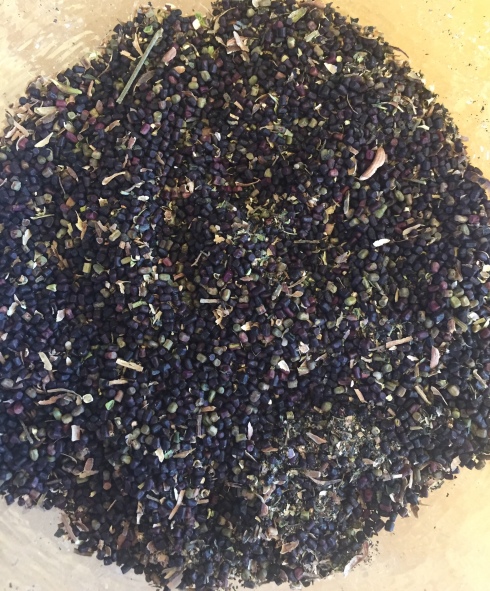
Deb, will you have any seed to sell?
LikeLike
Yes, I will probably list the packets in Feb 2018. If you subscribe to this blog I will announce here.
LikeLike
I have listed my indigofera suffruticosa seeds for sale on my blog. You inquired earlier about buying some.
LikeLike
Is Indigo Suffroctosa a perennial in Texas? Might it grow in Upstate NY?
LikeLike
Ummm I don’t think so it is more a tropical indigo. It seems like Japanese Indigo is what folks go with up north. The IS is a shrub that (for me) lives to 3 years. JI is an annual, up north some folks grow it in pots and put them in greenhouses for the seed to set. Check this link towards the bottom of the page to see where indigo suffruticosa is better suited. Sorry https://plants.usda.gov/core/profile?symbol=INSU
LikeLike
thankyou. I did grow Japanese Indigo successfully this year,,,,we had beautiful rains this year, and lots of warmth. It was a perfect year for it.
LikeLike
Good for you. JI is truly rewarding. I grow both, I am trying to figure out which indigo deserves more garden space! They seem to take turns on who does better each year.
LikeLike
I had such a bumper crop of Jap. Indigo, I dried 8# of fresh leaves, and tried your recipe that you posted, but did not discard the first brown tea….the indigo did not release from the leaves….such a waste. When we get back in March, I will try following it again to a T, and hopefully have some success. Thankyou for this blog!
LikeLike
Fascinating – thanks so much for sharing. Hope your back is feeling better. H.
LikeLike
Thanks, every day gets better. I am not up to running a dye pot or digging up madder root but I can harvest seeds!
LikeLike
Mine never produced seed pods! Not a one. And you are still wearing summer clothes. Here in middle Tennessee it is freezing.
LikeLike
So sorry, maybe Tennessee is too far north? You might do better with Japanese Indigo. It was hot in the sun but chilly out of the sun. I opted for sun before the temps tank here later this week.
LikeLike
More likely, too much shade. I am in an oak forest, only part sun at best. Still, I got a fair amount of leaves for the first year. I would have to find a friend with open sun in order to grow any kind of indigo. I tried JI in pots last year, best I could do, but not worth the effort to repeat.
LikeLike
If WordPress had a sad face I would press it for you.
LikeLike
It was worth trying! And not a complete failure. I have dried leaves to test.
LikeLike